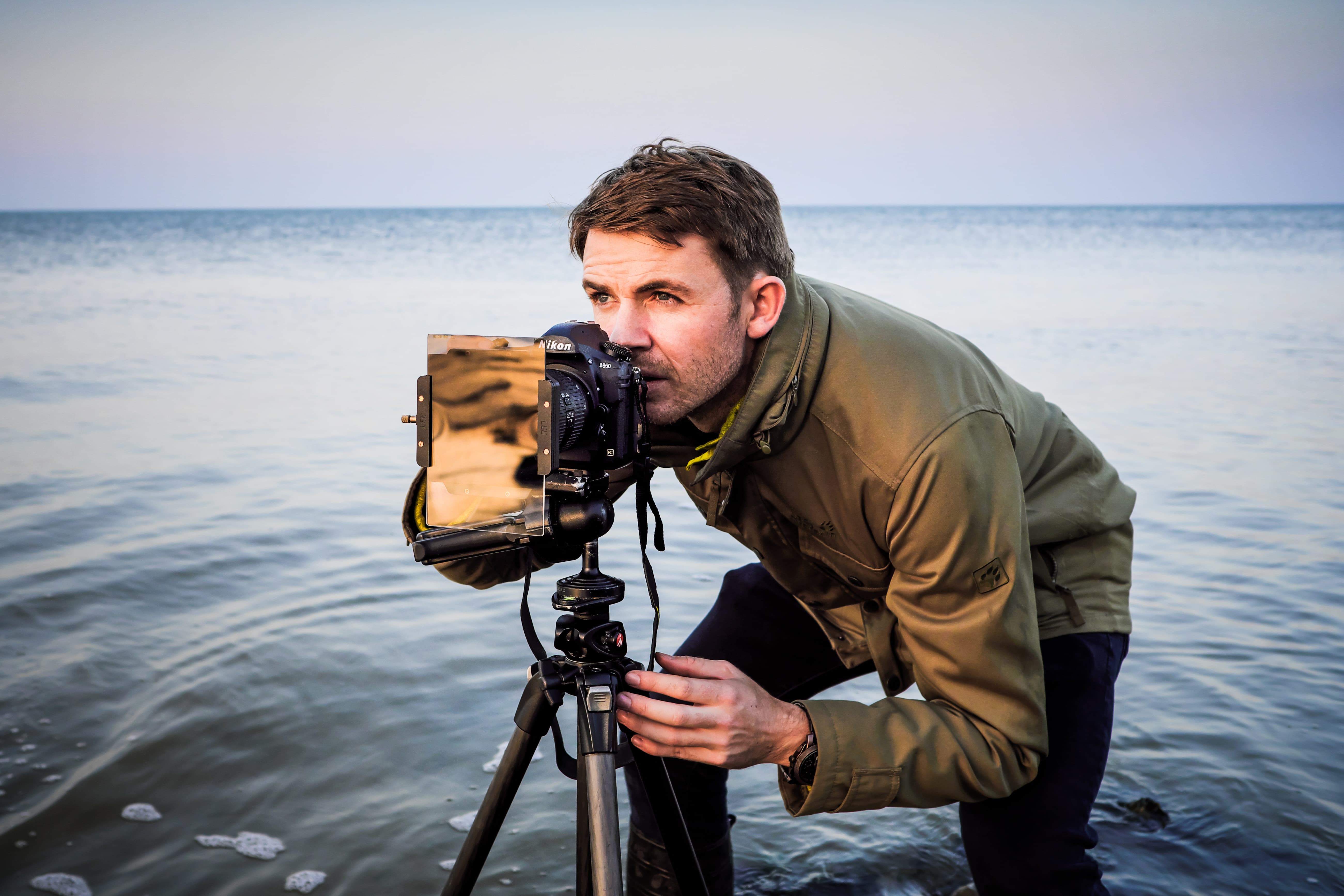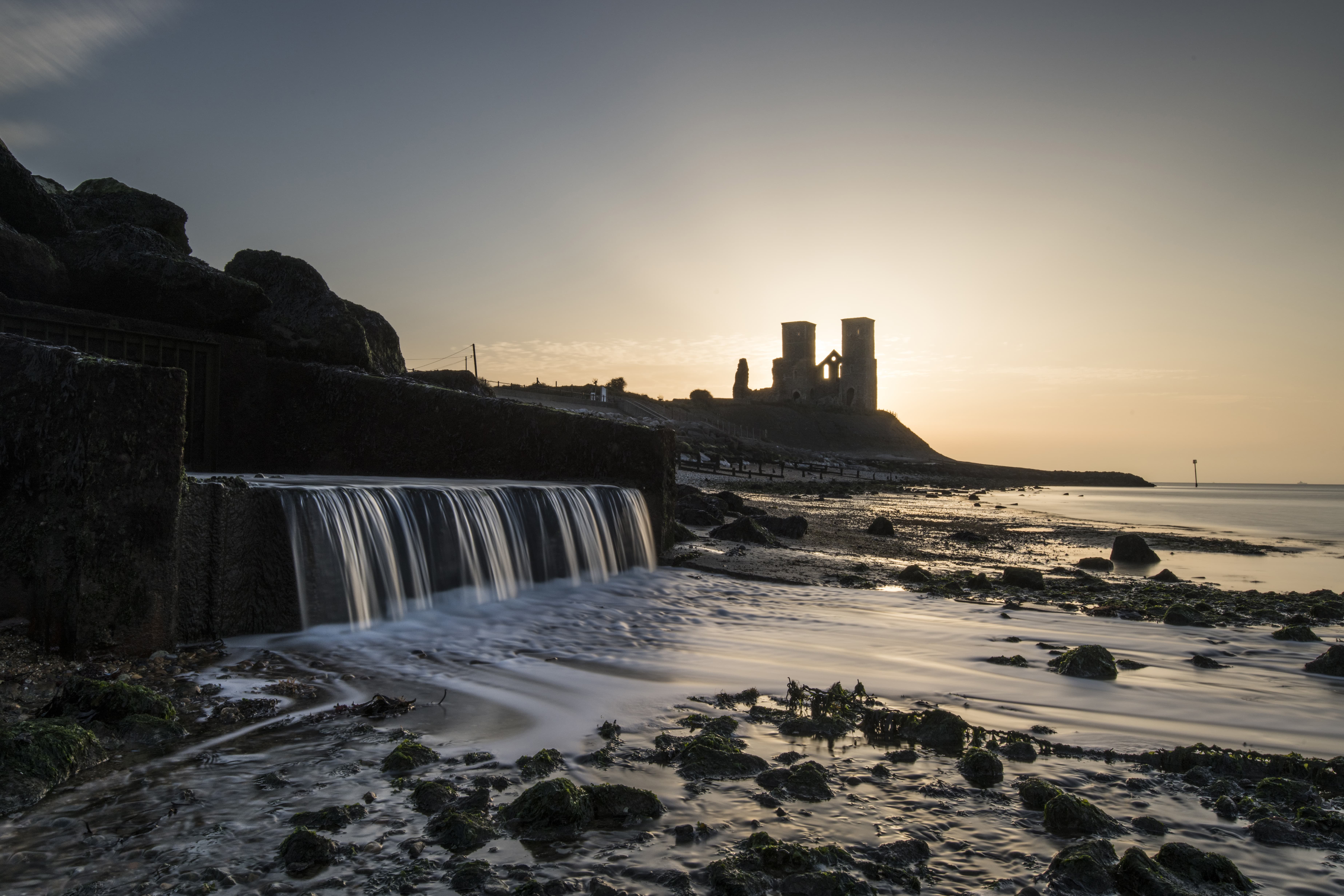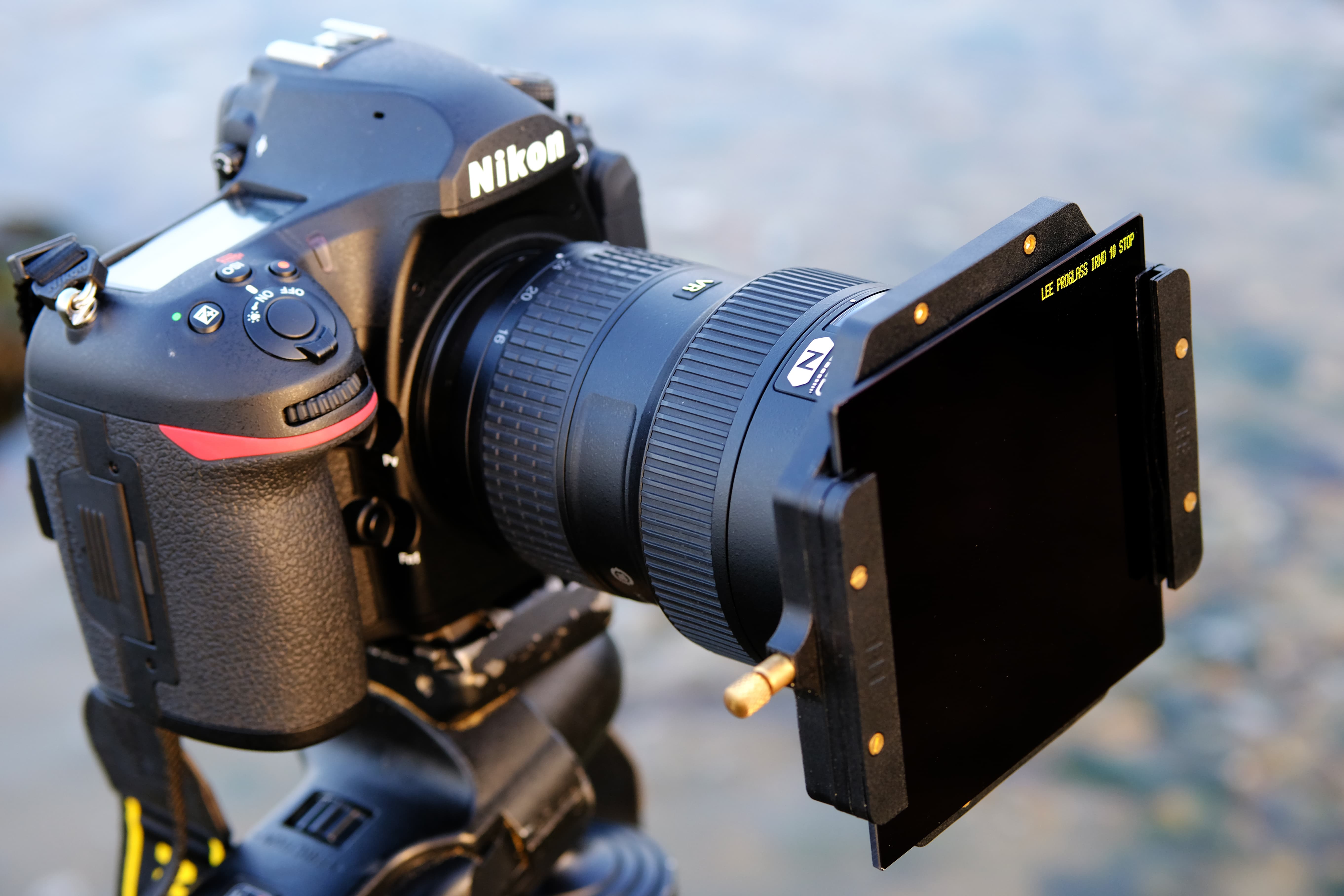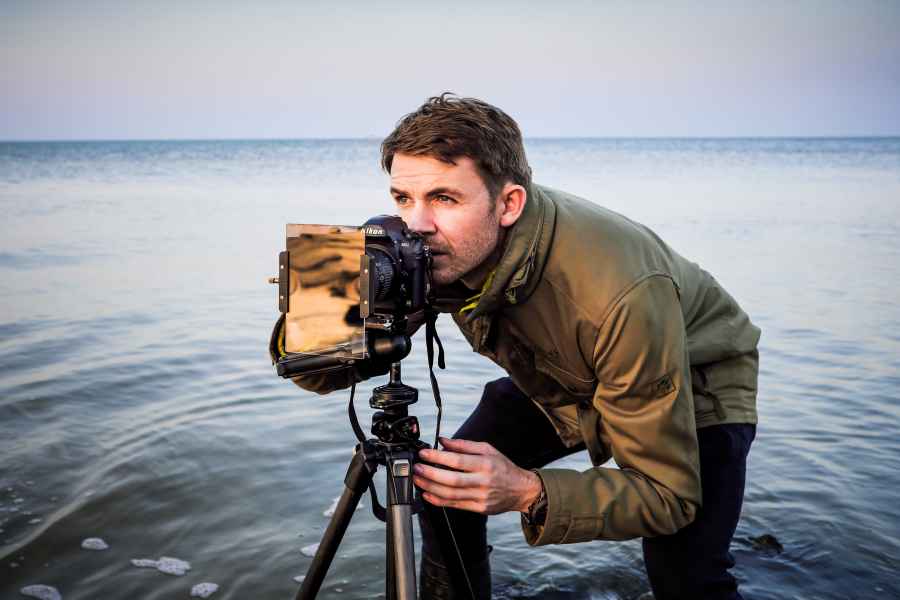Type ‘Big Stopper’ into a search engine or online image library and you’ll be presented with a selection of stunning images that have one thing in common – they’ve been taken using a Lee Filters Big Stopper. Since its arrival on the market seven years ago, the Big Stopper has become synonymous with long-exposure photography. For anyone who fancies turning fast-flowing rivers silky smooth, ironing out waves to create tranquil seascapes or giving clouds a sense of movement, it has become one of the most popular filters to own.

Lee’s ProGlass IRND 10 stop filter was tested with the manufacturers 100mm filter holder
The Big Stopper was something of a revelation at the time of its release, being one of the first 10-stop ND filters to fit a square filter system. The beauty of it is that it allows additional filters such as ND grads to be dropped in and used far more easily than screw-in filters. Demand for the filter in its infancy was so high that Lee Filters struggled to make enough. After ramping up production, in an effort to deliver on thousands of back orders, the company began making it for its Seven5 and SW150 filter systems, too.
Since then we’ve seen Lee Filters expand its range of long-exposure filters with the 6-stop Little Stopper, that gives increased flexibility with exposure lengths in low light at the start and end of the day, as well as the mighty 15-stop Super Stopper, that allows long exposure shots to be taken in the midday sun. With three long-exposure filters available for Lee Filters’ three different-size filter systems, photographers are rather spoilt for choice. So why has the company decided to launch a new range of ND filters when its current range is so extensive and so popular?

The ProGlass IRND filters are presented in a softly-lined pocket sleeve case
If there’s a downside to Stopper filters it’s that they’ve never offered perfect neutrality. By this I mean there’s always been a colour cast to shots that have been taken with them. Although I’ve found the latest hand-made Stoppers do perform slightly better in this respect, the original Big Stopper, of which I own one of the first examples, is well known for producing a rather cool cast. This was highlighted in my review of the Cokin Nuances ND1024 filter a couple of years ago (AP 10 Oct 2015) where I compared the two and found Cokin’s 10-stop ND filter produced superior results and required little work to correct any colour cast.
If you like to shoot long-exposure shots that you later turn to black & white, owning an ND filter that produces perfect neutrality isn’t the be-all and end-all if you’re only going to strip out the colour information at a later stage. If, however, you’d like the option of outputting your work in colour with the highest level of colour accuracy, you’ll want a filter that allows you to do just that, exactly what Lee Filters promises from its new range of ProGlass IRND filters. Just to clarify, these aren’t a replacement for the manufacturer’s Stoppers. Instead, they’re designed to sit alongside the company’s extensive line-up of ND, polariser and colour filters.
Features
To offer a little background information, the ProGlass IRND filters were originally developed for the movie industry to meet the exacting requirements of leading cinematographers. By opening up and making them available to stills photographers, the manufacturer aims to attract a new audience. What’s most interesting is how they differ from Lee’s Stopper filters. Not only are they designed to deliver neutral results with virtually no colour shift but they’re less prone to vignette in the corners on wide lenses – something that can happen with filters like the Big Stopper due to the filter having dye through it, compared with the ProGlass IRND’s which are surface coated. The optical quality and thickness (2mm) is the same as the Stoppers, but having been designed to block infrared and ultraviolet pollution, they also promise a cleaner, more clinical look to images, producing purer blacks, crisper whites and generally more vibrant, accurate colour.

The ProGlass IRND 10 stop filter was also tested in combination with a Lee Filters ND grad
As far as densities go, there are six filters in the ProGlass IRND range available for Lee’s three filter systems – Seven5 (75x90mm), 100mm (100x100mm) and SW150 (150x150mm). The strongest is the 4.5ND – a filter that permits a huge 15-stop reduction in light, like the Super Stopper. The other five filters comprise a 3.0ND (10-stop), 1.8ND (6-stop), 1.2ND (4-stop), 0.9ND (3-stop) and 0.6ND (2-stop). To prevent light leaks around the back of the strongest examples, the 4.5ND, 3.0ND and 1.8ND examples feature a permanently attached foam gasket that seals against the filter holder as it’s inserted, much like Lee’s range of Stopper filters.
The price doesn’t vary between different filter densities, however. With prices starting from £158 for the Seven5 IRND filters, rising to £179 for the 100mm system and £415 for Lee’s SW150 system, they’re clearly aimed at serious enthusiasts and professionals. They cost more than you’d pay for an equivalent Stopper and to offer some idea of the price difference, a 100mm 10-stop ProGlass IRND filter costs £179, whereas a 100mm Big Stopper can be bought for just under £100. The underlying question is, are Lee’s ProGlass IRND filters worth the extra outlay? With two samples for the 100mm system stowed in my bag, I set off to the Kent coast to test them and find out.
In Use
The first thing that strikes you is how the Lee Filters ProGlass IRND’s are presented. Rather than being protected on a bed of foam within a metal tin, they come in a pocket sleeve with a thick elasticated band to keep the filter contained. While the sleeve has a high-end feel to it, is clearly labelled with the filter strength and offers sufficient protection to prevent the filter shattering should you accidently drop it, I do prefer the classic metal tins as provided with Lee’s Stopper filters. Not only are they more robust but they fit very conveniently within the Lee Filters field pouch, which the new pocket sleeves don’t.

Testing of the filters was carried out on the North Kent coast during sunset
As part of the boxed contents you get an instruction booklet with a useful exposure guide. My only issue with the latter is that it’s prone to getting lost, so I opted to download the new Lee ProGlass IRND exposure guide app instead. It’s highly intuitive and almost identical to the excellent Lee Stopper app. Within seconds of setting up my camera on my tripod and securing the filter holder, I’d worked out that my 1/60sec shutter speed without the filter would require a 15-second exposure with the 10-stop ProGlass IRND in place. Users of the app also have access to a countdown timer. This can be handy when working beyond the limitations of the camera’s minimum shutter speed in bulb mode, or if your cable release doesn’t have a built-in timer.

A shot straight out of camera taken using the Lee Filters ProGlass IRND (10 stop)
Using the filter to extend my exposure time and turn flowing water silky smooth produced a very pleasing set of neutrally balanced long-exposure shots straight out of the camera. A few shots later I removed it and replaced it with the Big Stopper to form a direct comparison. The difference was immediately obvious on the camera’s screen. Whereas the shots taken with the 10-stop IRND offered excellent neutrality with no vignetting, the Big Stopper produced an obvious blue cast with strong corner shading towards the edges. Although it is possible to fix the cool cast and vignetting produced by the Big Stopper during post-processing, to do so can be fairly time consuming. Needless to say, I haven’t used the Big Stopper again since the 10-stop IRND has been in my possession, since it saves vital time during the editing process.

A shot straight out of camera taken using the Lee Filters Big Stopper (10 stop)
With a 3-stop IRND filter also in my bag, I couldn’t resist taking a few shots with it while I had the chance. Like the other lower strength ND filters in the IRND range, it proved effective at enabling fast apertures to be used in bright lighting conditions and like the 10-stop ProGlass IRND, produced neutral colour that couldn’t be faulted.
Our Verdict
It takes far longer to make Lee Filters ProGlass IRND filters than the company’s Stoppers. It’s this, combined with the extra effort that’s involved in the production process, that sees them cost quite a bit more. The question is: what price are you willing to pay for perfect neutrality?

The ProGlass IRND filters put in a very impressive performance, which comes at premium price
If you already own one of the company’s Stopper filters and you like the results it produces for your style of work, there’s little or no reason to upgrade to an equivalent ProGlass IRND filter. If, however, you’re tired of having to remove a colour cast or vignetting during post-processing and tend to output more shots in colour than you do mono, you’re much more likely to benefit from Lee’s ProGlass IRND filters. The way they deliver neutral results with no colour shift or vignetting is very well received, and the fact there’s no infrared pollution means colours are represented vibrantly, which isn’t always the case with all high-density ND filters.
All that’s left to say is that those who regularly use ND filters to shoot at fast apertures in bright light, or those who require one of the finest performing long-exposure filters, will be thoroughly impressed by the quality of Lee’s new ProGlass IRNDs. I envisage them finding a permanent place in many landscape and architectural photographers’ kit bags, and I’m going to be very reluctant to send back the review samples when the time comes.







